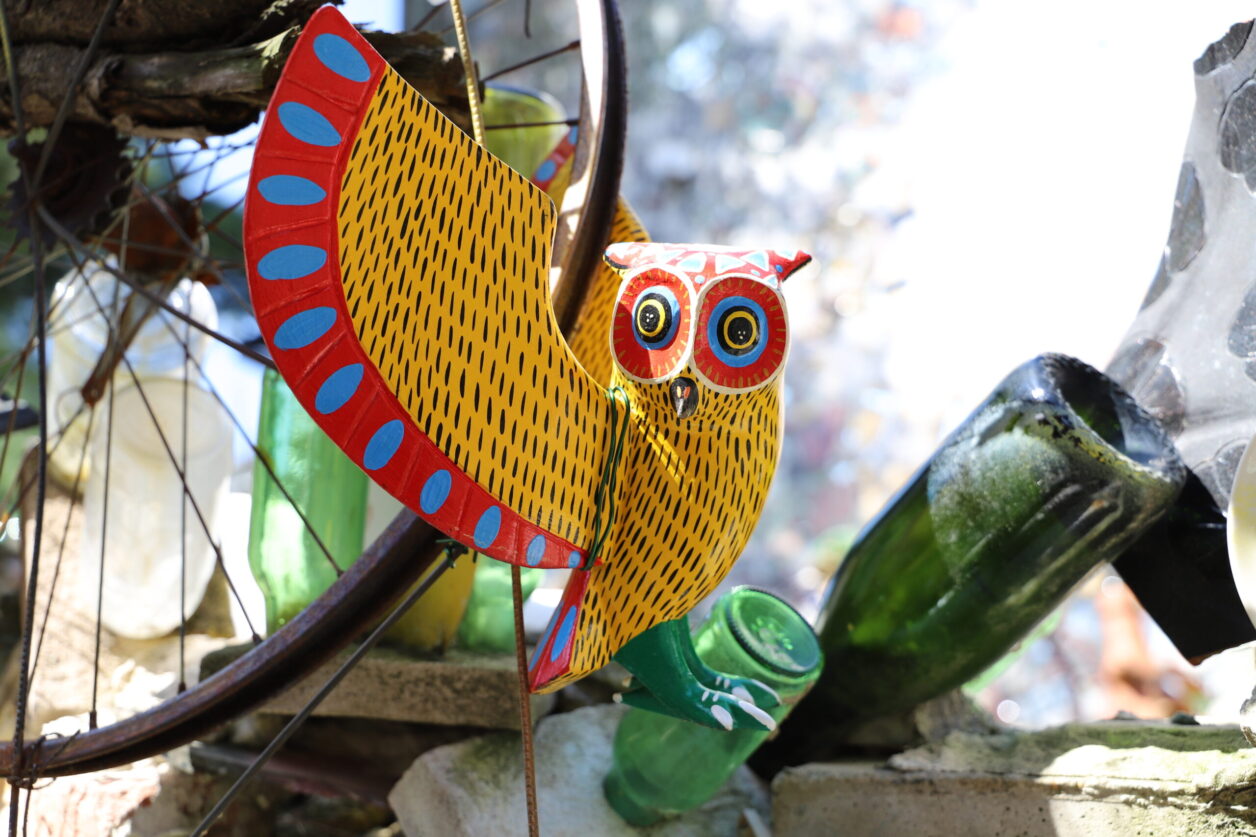
The Jimenez Family
San Antonio Arrazola, Oaxaca
Carved and painted wood
The Jiménez Family lays claim to four generations of master wood carvers, stemming from Manuel Jiménez Ramírez (1919 – 2005). His work, collected by Nelson Rockefeller, earned him the official title of “grand master” during his lifetime. The charismatic Jiménez Ramírez was also nicknamed “El Divino.” He was considered by some in his village to be a shaman and a nagual, a human capable of shapeshifting into his spirit animal. Jiménez Ramírez believed he was the reincarnation of a historical artist and that to stop working would stop the blood in his veins.
Jiménez Ramírez is credited with originating the Oaxacan alebrije for which the region is now known. Unlike the fantastical papier–mâché creatures invented by the Linares Family in Mexico City, Jiménez Ramírez’ Oaxacan alebrijes were carved from local copal wood and based on real animals. Jiménez Ramírez often incorporated into his designs Zapotec symbols and hair made from ixtle, a plant fiber derived from agave and yucca, in order to emphasize his alebrijes’ connection to nagualism. Like their Mexico City counterparts, Oaxacan alebrijes are decorated with intricate patterns in vivid colors, and usually painted by women in the family. Today Jiménez Family alebrijes are often made from finer, more expensive woods.
A yellow owl and brown owl are located in the long hallway, two black crows are on the east side of the courtyard, a white owl is in the Julia hallway, a black crow is near the huppa, a black crow overlooks the little garden, and two ghost fish based on Isaiah’s drawings are at the entrance to the sculpture garden, facing the huppa; all were created by Armando, Antonia, and Alejandro Jiménez.
An article about Armando Jiménez Aragon can be found here.
Example:
Painted Owl
Armando, Antonia, and Alejandro Jimenez
Painted Wood
10.25h x 10w x 7.50d in
Location: The long sculptural hallway outside
